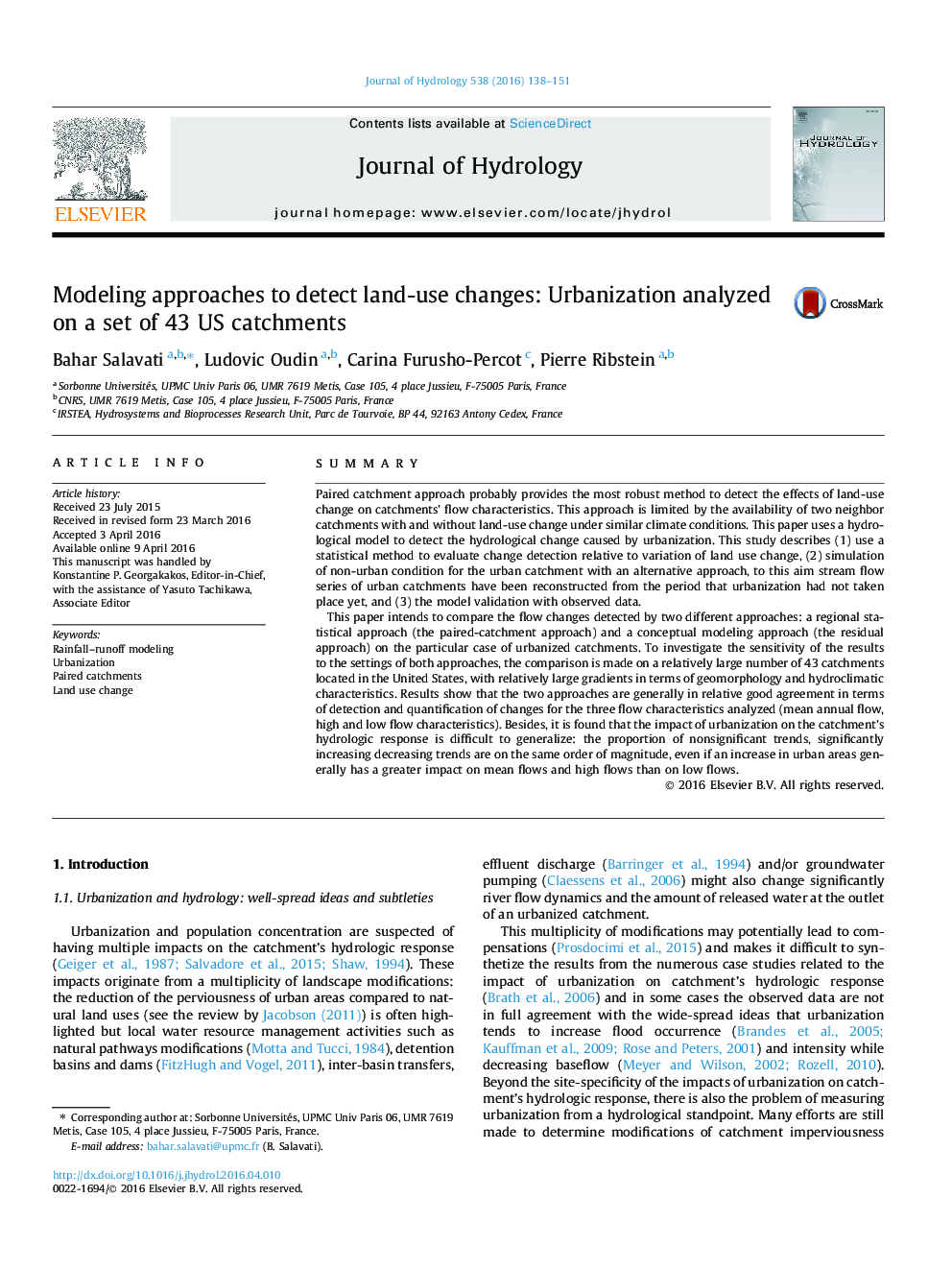| Article ID | Journal | Published Year | Pages | File Type |
|---|---|---|---|---|
| 6409593 | Journal of Hydrology | 2016 | 14 Pages |
Abstract
This paper intends to compare the flow changes detected by two different approaches: a regional statistical approach (the paired-catchment approach) and a conceptual modeling approach (the residual approach) on the particular case of urbanized catchments. To investigate the sensitivity of the results to the settings of both approaches, the comparison is made on a relatively large number of 43 catchments located in the United States, with relatively large gradients in terms of geomorphology and hydroclimatic characteristics. Results show that the two approaches are generally in relative good agreement in terms of detection and quantification of changes for the three flow characteristics analyzed (mean annual flow, high and low flow characteristics). Besides, it is found that the impact of urbanization on the catchment's hydrologic response is difficult to generalize: the proportion of nonsignificant trends, significantly increasing decreasing trends are on the same order of magnitude, even if an increase in urban areas generally has a greater impact on mean flows and high flows than on low flows.
Related Topics
Physical Sciences and Engineering
Earth and Planetary Sciences
Earth-Surface Processes
Authors
Bahar Salavati, Ludovic Oudin, Carina Furusho-Percot, Pierre Ribstein,
